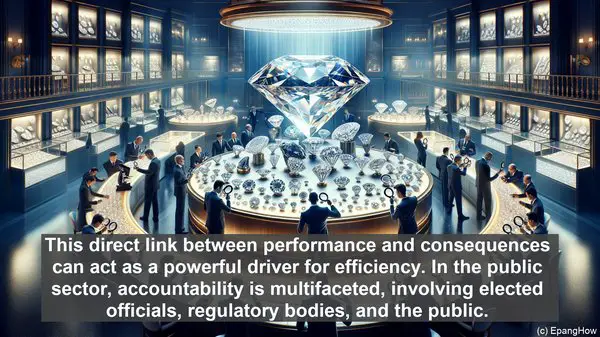Introduction: Efficiency as a Cornerstone of Organizational Success
Hello everyone! Efficiency, the ability to accomplish tasks with minimum wasted resources, is a vital aspect of any organization. Today, we focus on the contrasting landscapes of private sector efficiency and public sector efficiency. While both aim for optimal performance, they operate under distinct frameworks. Let’s dive in!
Private Sector Efficiency: The Drive for Profitability
In the private sector, efficiency is intrinsically linked to profitability. Companies strive to maximize output while minimizing costs, ensuring a healthy bottom line. This drive for efficiency often stems from market competition, where the most efficient players gain a competitive edge. As a result, private sector organizations are known for their agility, quick decision-making, and adaptability to market dynamics.
Public Sector Efficiency: Balancing Multiple Objectives
Contrastingly, the public sector’s efficiency landscape is more intricate. While service delivery and cost-effectiveness are crucial, they are not the sole determinants. Public sector organizations often have a broader mandate, encompassing social welfare, equity, and long-term sustainability. This necessitates a more comprehensive evaluation of efficiency, considering factors beyond immediate financial gains.

The Role of Accountability: A Key Distinction
Accountability mechanisms also differ significantly between the two sectors. In the private sector, the ultimate accountability lies with the shareholders or owners, who demand efficiency to safeguard their investments. This direct link between performance and consequences can act as a powerful driver for efficiency. In the public sector, accountability is multifaceted, involving elected officials, regulatory bodies, and the public. While this diffusion of accountability ensures checks and balances, it can also lead to a more complex decision-making process.
Impact on Service Delivery: Striking the Right Balance
Efficiency, in both sectors, directly impacts service delivery. In the private sector, streamlined processes and quick response times often translate to enhanced customer satisfaction. However, the profit motive can also result in exclusionary practices, where services are tailored to those who can afford them. In the public sector, the focus is on equitable service provision, ensuring access for all. While this can sometimes lead to bureaucratic processes, the aim is to prioritize inclusivity and social welfare.

